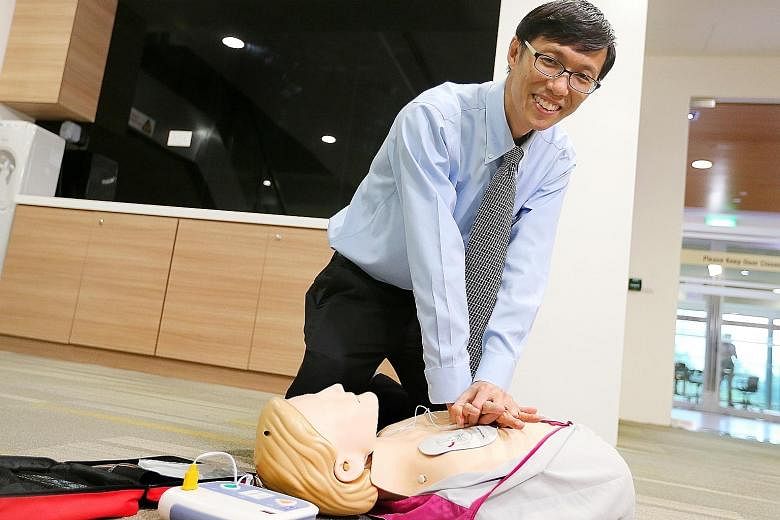Although more people suffered cardiac arrests at high PSI levels, there were also more good Samaritans who stepped up to perform cardiopulmonary resuscitation (CPR) on strangers, according to data from 2011 to 2014.
A study led by Singapore General Hospital found that CPR performed by bystanders more than doubled, rising from 21.9 per cent to 50.4 per cent. More bystanders also used automated external defibrillators in this period.
This led to an increase in survival rates among those who suffered cardiac arrests outside of hospitals, from 11.6 per cent in 2011 to 13.8 per cent in 2014.
The increase in civic-mindedness may be the result of efforts over the past five years to improve survival chances.
For example, emergency dispatchers were trained to instruct callers on how to perform CPR.
Time is of the essence during a cardiac arrest - every minute without intervention decreases the chance of survival by 10 per cent, said researchers.
Associate Professor Marcus Ong, senior author of the study, said Singapore still has some way to go in training more people in CPR. "But some CPR (without training) is better than no CPR," he said.
Free training is available at community centres.

